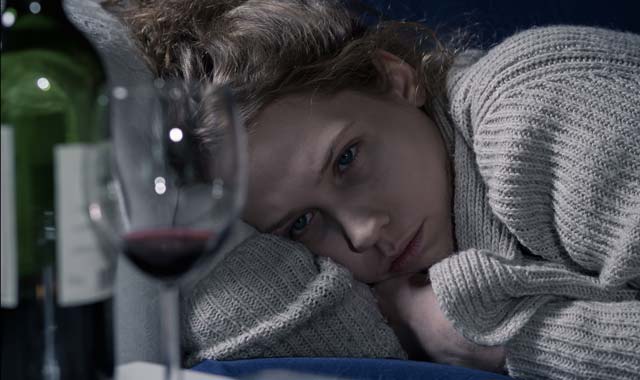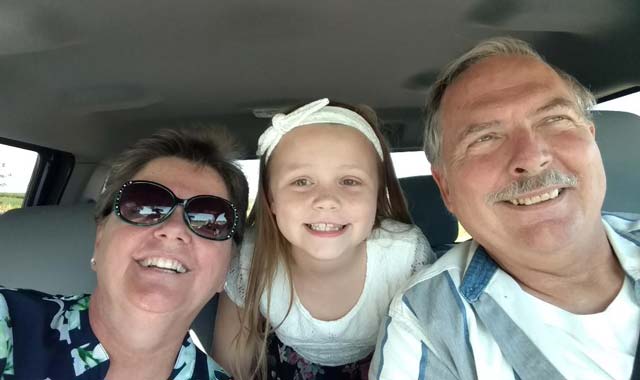Learn how local hospital professionals are responding to the phenomenon of substance abuse as it relates to mental illness, and how they’re treating depression, anxiety and other mental illnesses with non-pharmacological solutions.

It’s common to hear jokes about women and wine. Whether it’s a meme online or a cute knick-knack at a gift store, it’s likely you’ve read something like this:
“Wine is to women as duct tape is to men. It fixes everything!”
“Always remember, there is no problem that six glasses of wine can’t solve.”
“Some people need a special occasion to enjoy a little wine. I just need a glass!”
The message is prevalent: it’s normal to drink wine, even in copious amounts.
Shira Greenfield, clinical manager of behavioral health at Centegra Health System in McHenry County, helps to treat patients with behavioral and mental health disorders. Her patients are age 18 and older, and they come from all walks of life, with a variety of diagnoses. She sees patients with anxiety, depression, bipolar disorder and post-traumatic stress disorder (PTSD), and many of these patients also have a substance abuse disorder.
When it comes to women and addiction, Greenfield is seeing a recent influx of patients.
“I think women and mental health are discussed in the media, at least, when it comes to depression and anxiety, but women and substance abuse aren’t talked about as much,” she says.
She recalls a commercial she recently saw on TV.
“You see a woman, and there are four kids running around and screaming in the background,” Greenfield describes. “The woman pours herself this huge glass of white wine and says, ‘It’s going to be a white Christmas.’ The kids scream more and she says ‘Very white.’ Here is a message that says, ‘Hey mom, when parenting gets stressful, just drink wine.’”
Greenfield urges people against using alcohol as a coping mechanism – especially since her patients with an alcohol addiction oftentimes struggle with nearly every aspect of life.
“Ads used to tell women to take a bath to relieve stress, not drink six glasses of wine,” she says. “An addiction affects everything. Certainly, it affects relationships. There are often financial and legal implications.
With employment, there are either days missed, or there’s an issue with showing up intoxicated or hungover. With transportation, some people lose their driver’s license or find their family doesn’t trust them with keys. And it can escalate really quickly if not treated.”
In more advanced cases, Greenfield has seen patients need a liver transplant as a result of their addiction. However, thanks to treatment, most of her patients get the help they need before it escalates to that level.
“We just want people, especially women, to be more aware that not all wine-drinking is harmless,” she says.
What Women Should Know About Substance Abuse
As Centegra’s program coordinator of outpatient services, Siobhan Petrie leads two programs for mental health patients. Like Greenfield, she has also seen a fair share of women with substance abuse disorders.
The first program Petrie leads is an intensive outpatient program for patients with a mental health diagnosis. Patients attend group therapy and/or individual therapy for three to six hours a day, depending on the severity of their symptoms. The second program operates similarly but is for patients who have a co-occurrence of both a mental health diagnosis and a substance-abuse diagnosis.
Petrie is seeing more and more women in the latter program. Her patients range from age 18 to age 60 and older.
“Most of our patients who are women have experienced some sort of traumatic event in their past,” Petrie says. “So, that’s oftentimes an underlying reason why we see women fall into the maladaptive coping methods of abusing alcohol and opioids.”
Turn on the news, and you’ll inevitably hear about an opioid epidemic sweeping the nation. Opioids are drugs that react with receptors on nerve cells to relieve pain and cause pleasurable feelings. They include legal drugs prescribed for chronic pain and illegal drugs, like heroin.
“I think it would be helpful for women to understand that when it comes to substance use, there are absolute differences between men and women,” Petrie says. “We’ve known for a long time that women can become addicted to alcohol faster than men, and now we know this happens with opioids also.”
According to Petrie, women metabolize alcohol and drugs at a faster rate than men, and the period of time in becoming physically dependent on alcohol or opioids is shorter for women than for men.
Between 1999 and 2010, overdose death from prescription painkillers increased more than 400 percent among women compared to 230 percent among men, according to the Centers for Disease Control and Prevention.
Heroin use among women between 2002 and 2012 increased 100 percent, compared to 50 percent among men.
“That speaks to why we’re seeing so many more women in our co-occurring treatment program than we did 15 years ago,” Greenfield says. “And, since women have a menstrual cycle and monthly hormonal changes, treatment can be more complex. Women are particularly more hormonally vulnerable to disorders at puberty, postpartum and menopause.”
According to the Centers for Disease Control and Prevention, women are more likely to see a doctor than men. They’re also more commonly diagnosed with chronic illnesses that have a physical pain component, such as migraine headaches, arthritis, fibromyalgia and rheumatoid arthritis.
“So, it’s just another example of how women can be in a position to be prescribed opioids,” Petrie says. “There’s a tendency for people to believe that if you have pain, there’s a pill to fix it. And everybody has a right to have zero pain. But, we want to educate people that for certain chronic conditions, zero pain may not be realistic.”
Sometimes, it can be difficult for patients to distinguish chronic pain from depression, Greenfield adds.
“Some of the same stress hormones produced in people with depression are also produced in people with pain,” she says. “So, sometimes it gets hard to tease out what’s stress, what’s depression, what’s a headache and where is that headache coming from. This is when mental health care can be really helpful because it can easily get muddy.”
A Variety of Treatment Options
When it comes to treating substance abuse disorders, for both men and women, Petrie emphasizes there are many ways to manage pain and not all of them are pharmacological. Meditation, physical therapy and biofeedback are other options to help manage pain.
Plus, the benefits of both individual and group therapy cannot go unnoticed.
“With mental health concerns, the first thing I would encourage someone to do is see an individual therapist,” Petrie says. “It’s really nice to have a third-party individual who is not involved in your life in any way, shape or form, who can be there to listen, give some healthy coping skills to manage stressors, and be there to guide you through what’s going on in your life.
“And with group therapy, you have the benefit of knowing that you’re not alone,” Petrie adds. “It’s an environment that engenders support and feedback from one patient to another. So many people in your life may not understand why you just can’t get off the couch, but at group therapy, everybody understands.”
At Centegra, many types of expressive therapies – such as art, writing and yoga – also can be incorporated into treatment plans. Centegra programs emphasize healthy habits for nutrition, exercise and sleep, Petrie says.
“One of the things I’m really proud of with our programs is that we provide a variety of forms of treatment,” she says. “Not everybody is built the same and has the same needs. Many patients have only experienced one form of therapy before, and sometimes a different type of therapy is the missing puzzle piece for recovery.”
Someone Who Can Help
As a licensed clinical professional counselor, Paul Martin provides individual counseling for youth and adults ages 5 and up at Presence Saint Joseph Hospital, in Elgin. He commonly treats anxiety and depression in adults, while the majority of his younger patients have impulse control and behavioral issues.
Martin’s work also includes families and, at times, couples. He has extensive experience with court-mandated anger management and domestic violence groups. Martin has an additional advantage of being bilingual in English and Spanish. Not only does this broaden his clientele – many of his patients are of Latino/Hispanic descent – but it also deepens his understanding of the importance of communication.
“From a language standpoint, being bilingual has helped me recognize that communication is the key to having healthy relations in all areas of life and that no matter which language you speak, any unclear message can be misinterpreted,” Martin says. “From a therapeutic perspective, it has opened up the possibility of serving the Latino/Hispanic community and being a bridge to the communication that is often lacking when a child speaks a different language than their parents.”
In the wintertime, Martin sees an uptick of seasonal affective disorder (SAD) in his patients.
“People with SAD have increased symptoms of depression during the winter months,” he explains. “There are varying articles and theories that associate SAD with Vitamin D deficiencies, weather and lack of sunlight, and even the holidays. If you think you might have SAD, a medical workup would be important to rule out any deficiencies.”
If there’s no deficiency behind why a person is feeling depressed, then Martin typically meets with the patient. First, he uncovers the patient’s negative thoughts and learns how those thoughts affect the patient’s mood. Then, Martin helps his patients reframe those negative thoughts to include positive ones.
“Thinking positively sounds easy, but it can be very difficult for someone with any depressive symptoms or disorder,” Martin says. “I actually utilize the same strategies that I would teach a patient whenever I’m dealing with a stressful situation.”
Regardless of what disorder Martin is treating, his job is to meet with patients, listen to them, understand, and help them empower themselves. No two sessions are alike.
“Each person brings a unique perspective to the therapeutic environment,” Martin says. “I work from the mindset that I have to meet the person where they are at and empower them to take the reins of their own mental health. This involves teaching strategies all the way down to analyzing their past to help understand how it affects the present.”
Martin adds that it’s an accomplishment if the patient learns at least one new thing about himself or herself during a single session. Therapy can sometimes take many weeks or months to notice significant gains.
“But, if a patient is learning about themselves along the way, progress will show in the long term,” Martin says. “I get satisfaction knowing that our work has such a huge impact on the community and helps people to live better, more fulfilled lives.”
If You Need Mental Health Services
If you or someone you know is in an immediate crisis, call the National Suicide Prevention Hotline at (800) 273-8255, call 911 or go to the nearest emergency room.
If your crisis doesn’t involve immediate results, make an appointment with your local mental health professional.
Schedule an appointment with Paul Martin, at Presence Saint Joseph Hospital in Elgin, by calling (708) 410-0615.
For more information about Centegra’s intensive outpatient programs, call the behavioral health intake line at (800) 765-9999.




















































